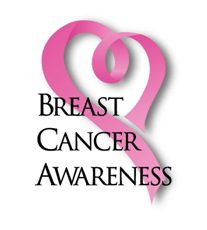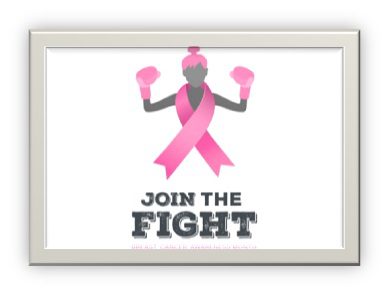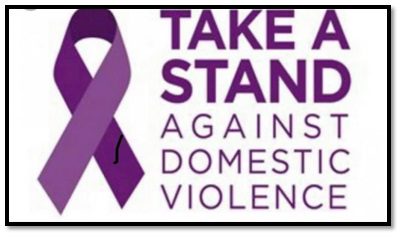“When you do nothing, you feel overwhelmed and powerless. But when you get involved, you feel the sense of hope and accomplishment that comes from knowing you are working to make things better. ” Maya Angelou
October is Breast Cancer Awareness Month. Breast cancer is one of the most frequently diagnosed cancers in women. In 2008 some 1,380,000 million new cases and 458,000 deaths were reported worldwide.
The number of people being diagnosed with breast cancer is increasing, but the good news is survival rates are improving. This is probably because of more targeted treatments, earlier detection and better breast awareness. The biggest risk factor, after gender, is increasing age – 80% of breast cancers occur in women over the age of 50.
Breast cancer also affects men, but it’s rare – around 300 men are diagnosed each year. Breast cancer is not one single disease there are several types of breast cancer. Not all breast cancers show as a lump, and not all breast lumps are breast cancer. Less than 10% of breast cancer runs in families, so having someone in your family with breast cancer doesn’t necessarily mean your own risk is increased.
Breast Cancer Awareness Month provides us with 31 crucial days to raise awareness and reduce the stigma of breast cancer through education on symptoms and treatment. It is also an opportunity to remind women to be ‘breast aware’ for earlier detection. It is my hope that greater knowledge will lead to earlier detection of breast cancer, which is associated with higher long-term survival rates, and that money raised for breast cancer will produce a reliable, permanent cure. So this October I am asking residents of West Park to be ‘breast aware’. Being ‘breast aware’ means getting to know your breasts; how they look and what they normally feel like. Until the threat of breast cancer is removed then self-examination remains the key to early detection.
Breast cancers produce few warning signs and hardly ever cause pain. Beyond a vague discomfort, often the first thing people notice is an abnormal lump in their breast. There are other possible signs: know them, look for them – and don’t take chances!!!
Below are five easy-to-remember steps to being breast aware:
1. Know what is normal for you.
2. Know the changes to look and feel for.
3. Look and feel.
4. Report any changes to your doctor without delay.
5. Attend regular breast screenings.
A pink ribbon is a symbol of breast cancer awareness. It may be worn to honor those who have been diagnosed with breast cancer. The pink ribbon is associated with individual generosity, faith in scientific progress, and a “can-do” attitude. It encourages us to focus on the emotionally appealing ultimate vision of a cure for breast cancer, rather than on the fraught path between current knowledge and any future cures.
Join us as we “Paint the City Pink” at our Wednesday, October 16, 2019 Commission meeting at 7:00 pm when we will recognize breast cancer survivors by wearing pink to along with providing pink inspired desserts.
Recognize, Report and Prevent Domestic Violence!
By Commissioner Felicia Mychele Brunson
Fact: An act of domestic abuse occurs every 12 seconds in the U.S. Too many American women live in fear of the very people upon whom they depend for love and affection. Instead of providing refuge, the walls of many homes serve as prison bars.
WHAT IS DOMESTIC ABUSE? Domestic abuse, or “battering”, is a pattern of abuse by one partner against the other, for the purpose of maintaining power and control. Domestic abuse often includes (but NOT ALWAYS) physical abuse. Forms of domestic abuse can include:
Physical battering: The abuser’s attacks or aggressive behavior can range from bruising to murder. It often begins with what is excused as trivial contacts which escalate into more frequent and serious attacks (this can include the abuse of household pets).
Sexual abuse: Physical attack by the abuser is often accompanied by, or culminates in, sexual abuse where the woman is forced to have sexual intercourse with her abuser, or to engage in unwanted sexual activity.
Psychological battering: The abuser’s psychological or mental abuse can include constant verbal abuse, harassment, excessive possessiveness, fault-finding, isolating the woman from friends and family, deprivation of physical and economic resources, and destruction of personal property.
SOME FACTS ABOUT DOMESTIC ABUSE:
Adult domestic violence is one of the most serious public health and criminal justice issues facing women today. Most victims of domestic violence are women. Between 91-95% of all documented domestic violence cases are women being abused by male partners. About 1-2% is physical abuse of men by their female partners, and 3-8% of the total number of reported domestic violence cases involves same-sex relationship abuse.
Every woman is at risk for becoming a victim of domestic violence. Domestic violence has no regard for socio-economic status, race, ethnicity, religion, employment status, physical ableness, age, education, marital status, or sexual orientation. In fact, being FEMALE is the only significant risk factor for being a victim of domestic violence
Children in families where there is domestic violence suffer negative consequences even if they are not the targets of the abuse. Children who witness their mothers being abused by their fathers (or vice versa) often exhibit health problems, sleeping difficulties, acting-out behaviors, and feelings of guilt, anger, fear and powerlessness. In addition, research suggests that boys who witness their mothers being abused often grow up to be abusers themselves, thereby continuing the cycle of domestic violence.
Even though the vast majority of victims of domestic violence are women, males are becoming increasingly the victims of domestic violence. The U.S. Department of Justice indicates that women are twice as likely to be murdered by their domestic partners as men.
SOME MYTHS ABOUT DOMESTIC ABUSE:
MYTH: When someone is battered, he/she must have done something to deserve it.
FACT: Battering is never the victim’s fault. NEVER. Batterers abuse their partners as a way to control them. Domestic violence is about control, not about punishment or discipline.
MYTH: Battering usually ends after a couple gets married or has children.
FACT: Battering usually gets WORSE over time, not better. Getting married and/or having children does not protect someone from becoming a victim. In fact, sometimes it makes the situation worse.
MYTH: Alcohol and other drug use may cause battering.
FACT: Most people who use alcohol or other drugs do not abuse their partners. And many people who never use alcohol or other drugs do abuse their partners. While it is true that perpetrators of domestic violence are sometimes under the influence of alcohol or other drugs when the episode occurs, battering and alcohol or other drug abuse are 2 separate problems – neither is caused by the other. Anyone who abuses another person while under the influence of alcohol or another drug needs help for BOTH problems.
ARE YOU IN AN ABUSIVE RELATIONSHIP? Think about how you are being treated and how you treat your partner. Remember, when one person scares, hurts, or continually puts down the other, it is abuse. Talk to someone. Without some help, the abuse will continue.
West Park, the month of October is full of celebrations that educate, empower and motivate us. Let’s remember to be ‘breast aware’ and wear our pink ribbons this month in support of Breast Cancer Awareness Month. Let’s join in the final days of celebration of Hispanic Heritage Month by reflecting on the contributions of Hispanics. And most importantly, recognize, report and prevent domestic violence in our beloved community.
Remember to contact me at City Hall with your ideas, suggestions or concerns. I represent you and appreciate your input into the continued success of our beloved city. I can be reached at (954) 329-8990 or email fbrunson@cityofwestpark.org.










